FEATURES|COLUMNS|Ancient Dances
Jardin aux Lilas, the First Zen Ballet
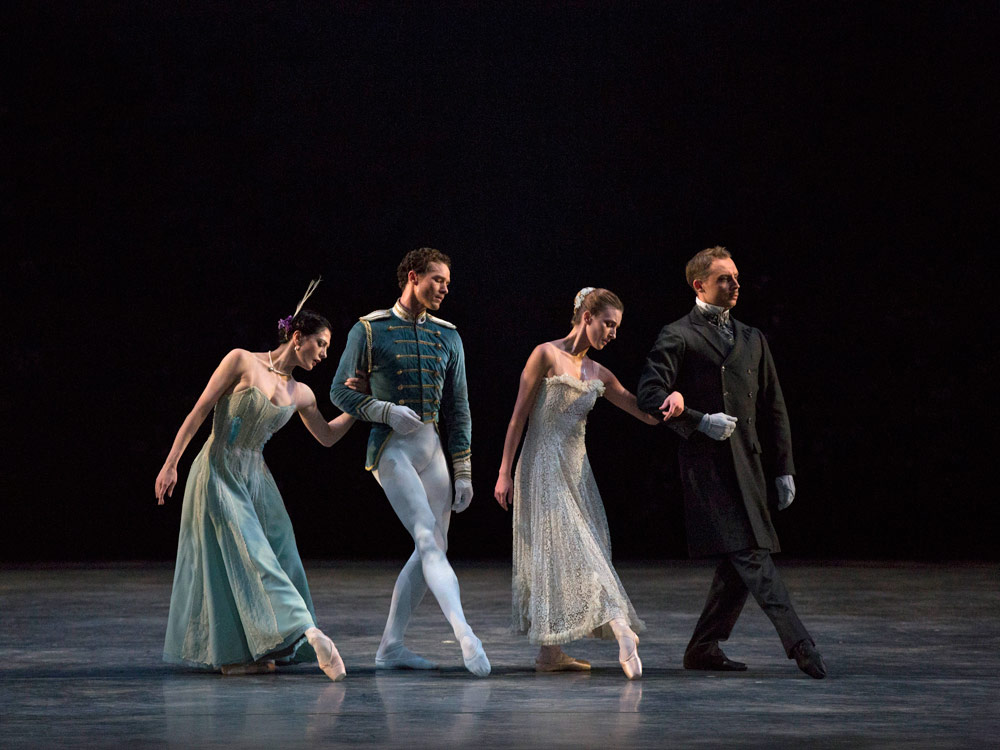 From left: Veronika Part, Corey Stearns, Devon Teuscher, and Roman Zhurbin, in Anthony Tudor’s Jardin aux Lilas. 2014. Image courtesy of the American Ballet Theater
From left: Veronika Part, Corey Stearns, Devon Teuscher, and Roman Zhurbin, in Anthony Tudor’s Jardin aux Lilas. 2014. Image courtesy of the American Ballet Theater
In 1936, choreographer Anthony Tudor debuted his ballet Jardin aux Lilas (The Lilac Garden) at the Mercury Theatre in London, performed by the Ballet Rambert company, with music by Ernest Chausson. The dance world had never seen anything like it. Atmospheric and introverted, even the setting—a lilac garden in full bloom, at dusk—put the activity not only in a half-light, but a perfumed half-light, a lavender haze, reminiscent of the final line of the Japanese Heian-era poem, Iroha: “All that remains is the fragrance of the color.” Even the floating world of appearances fades, but the moment is indelible, etched on life itself.
Western dance artists engaged in a variety of encounters with Buddhism that went beyond mere exoticism and artistic impulse. Choreographer George Balanchine and artist Henri Matisse famously included the tantric dakini Vajrayogini in their 1920 collaboration with composer Igor Stravinsky, Le Chant du Rossignol, but oddly remade her as the image of death. The ballet features Buddhist warriors, whose designs were taken by Matisse from sixth century Central Asian sculptures he likely saw at the Museé Guimet.
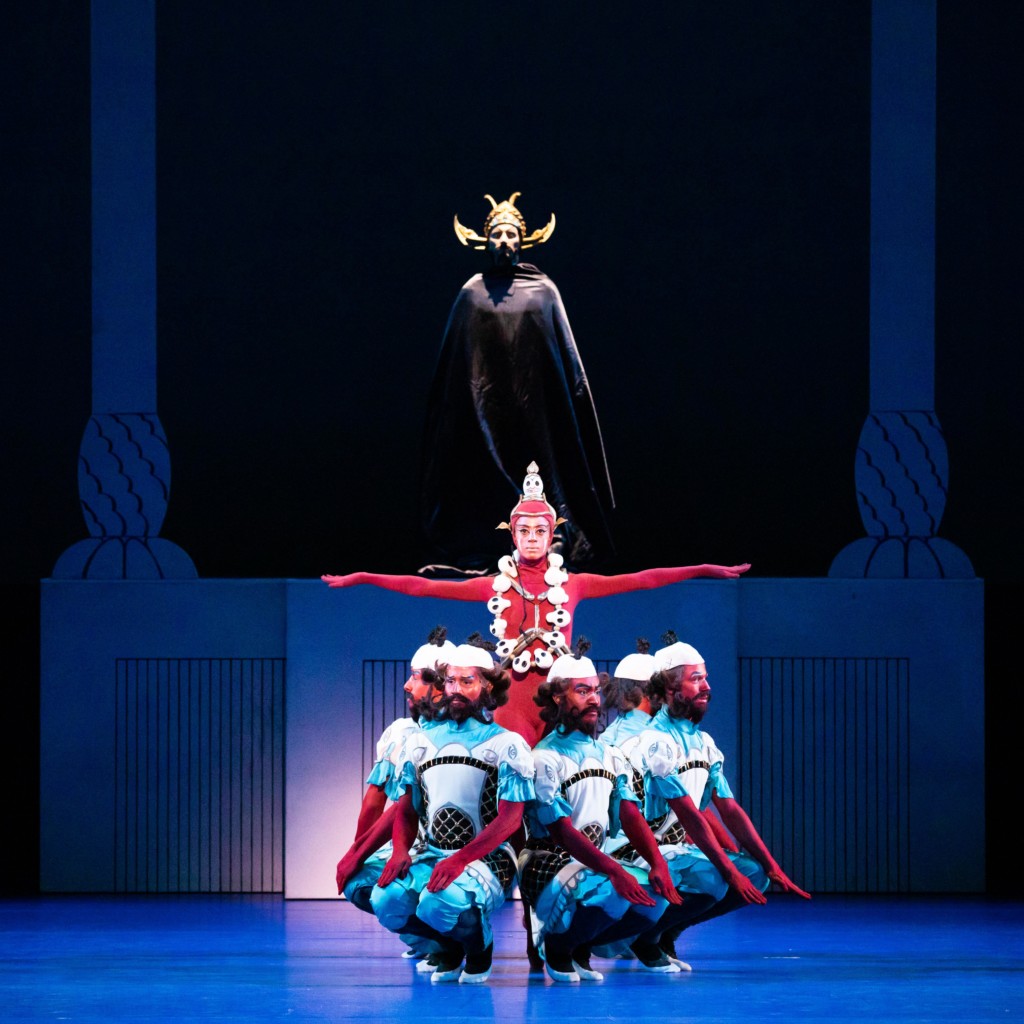
Le Chant du Rossignol, by Balanchine, Matisse, and Stravinsky. Reconstructed
by Millicent Hodson and Kenneth Archer. The Red Dakini and Buddhist
warriors. 2019. Image courtesy of Ballet West
Dancers Ted Shawn and Ruth St. Denis traveled through Asia over two years, in 1925–26, performing their works inspired by Oriental themes and documenting actual Asian dances on film and in photos. This was a kind of pristine encounter the likes of which is no longer possible in today’s integrated world, without functional kingdoms. But it was a kind of magic—just as the first prehistoric artists who inscribed portable objects with images, carrying them far and wide, learned that one of the earliest artistic acts was copying existing art, whatever the origin. Buddhism is conducted by a personal transmission of teachings over the centuries and over the globe. Dance has always been passed on in the same manner.
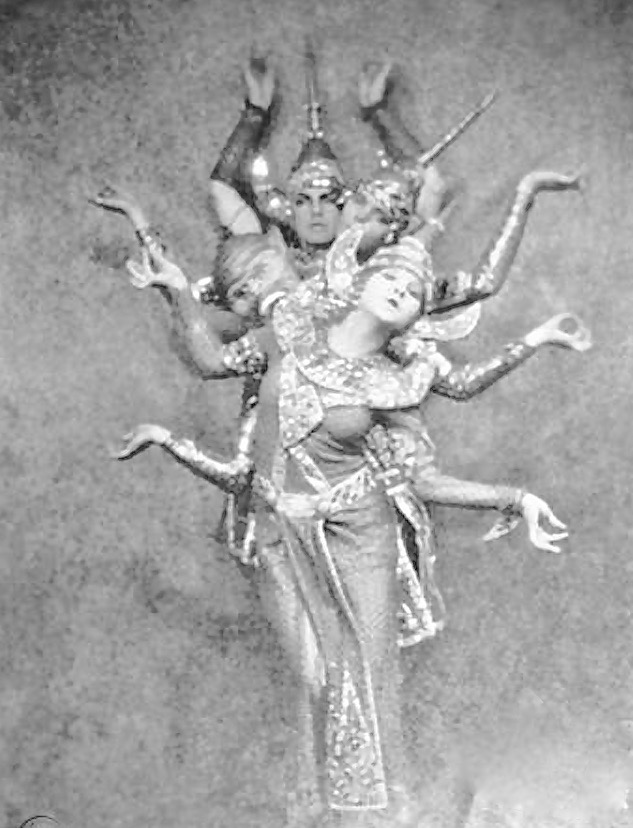
Ted Shawn, Ruth St. Denis, and dancers. 1920. Photographer unknown.
Private collection. From Core of Culture
In Anthony Tudor’s case, by the 1930s, he was living a disciplined Zen life in London, home of the non-sectarian Buddhist Society, a happening scene founded by theosophist-turned-Buddhist Christmas Humphreys. It was an intellectual and spiritualist salon. The queen of Bhutan visited in 1925. Tudor was one of those artists living and working in Britain who responded to the truth of the reality of the dilated moment: “Just this.” The Buddhist Society gave profile and respectability to students of Asian spiritual traditions. Tudor was part of an early British Buddhist wave.
Tudor understood that existence had a place and a time, and that the time was always a bare now. In this he was pioneering, not only in his adoption of Zen Buddhism as a way of life, but in the establishment of lay Buddhism in the West, its centers and its purpose in the world. Tudor died in 1987, at the First Zen Institute of America in New York City, having led the organization for 30 years. Zen was his way of life. Along the way, he became distinguished as a modernist choreographer, indeed a Zen modernist, one of the 20th century’s most esteemed artists working in classical ballet.
Tudor focused on physical and psychological details to strip away the ego, pushing the dancer beyond their artistic habits and extending their mental and artistic potential, which to him were joined. Ballet is an art form of tradition and cliché. Even in the iconoclastic light of Sergei Diaghilev’s Ballet Russes, with its famous dancers Pavlova and Nijinsky, and the larger-than-life impression of Freud’s new psychology, with its sexual undertones, Tudor was educated but not overwhelmed. Instead, he created a ballet in Jardin aux Lilas that refused to let the dancers’ personal mannerisms triumph, and instead laid out the magnitude of the moment experienced by the ballet’s protagonist, Caroline, in unflinching terms: a plain encounter of reality as it is, more real than the sum of its attributes.
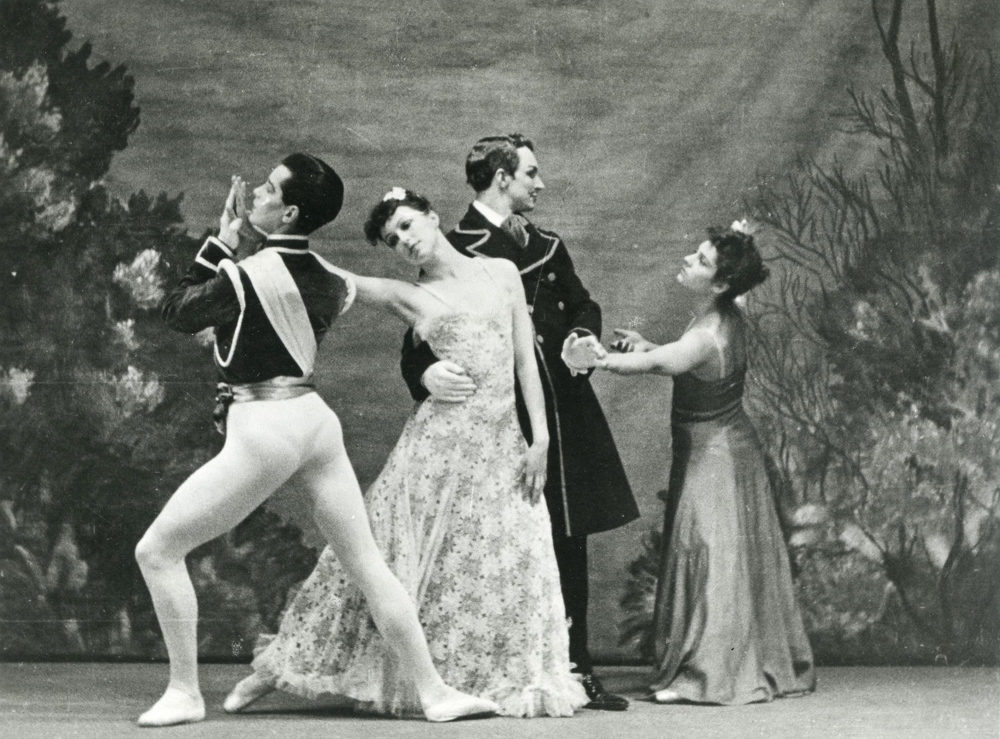
Anthony Tudor’s Zen ballet Jardin aux Lilas at the Mercury Theater, 1936. British photographer. From left: Hugh Laing, Maude Lloyd, Anthony Tudor, and Peggy Von Praagh. Note the absence of any cultural indicator of Buddhist or Asian aspects. From Core of Culture
The ballet is about a moment that is at the same time a summary and a letting go; it is a grounding in a future of lost love. Caroline, the only character with a name, must marry a man she does not love. The others are called, Her Lover, The Man She Must Marry, and An Episode in His Past. Often called the “first psychological ballet,” it is clearly about Caroline’s reality, and not only the moment but the impending moment of marriage and the inability to have even a fleeting romantic moment with Her Lover. Finally, Her Lover slips her a bouquet of sweet-smelling lilacs just as the truth that they will not be together is set, and he disappears from her life.
Maude Lloyd, later Maude Gosling, was the South African ballerina who played Caroline in the original production in 1936. I was able to interview her about this ballet at the age of 86 in London. Parts of this interview were published in Ballet Review in 1994. Other quotations here are from transcriptions of recordings made at the time.
“People called it the first psychological ballet,” Maude explained to me. “But Giselle is as psychological as anything. What they are missing is that this is the first ballet about real people. All the romantic swoon of a lilac garden in full bloom sits in what Tony called ‘Zen irony’ against the complete conformity of Edwardian culture and its repressive requirements. It is supposed to challenge rationality; to break reason. Now, I can see that the entire situation is a ‘Zen riddle’ [koan].”
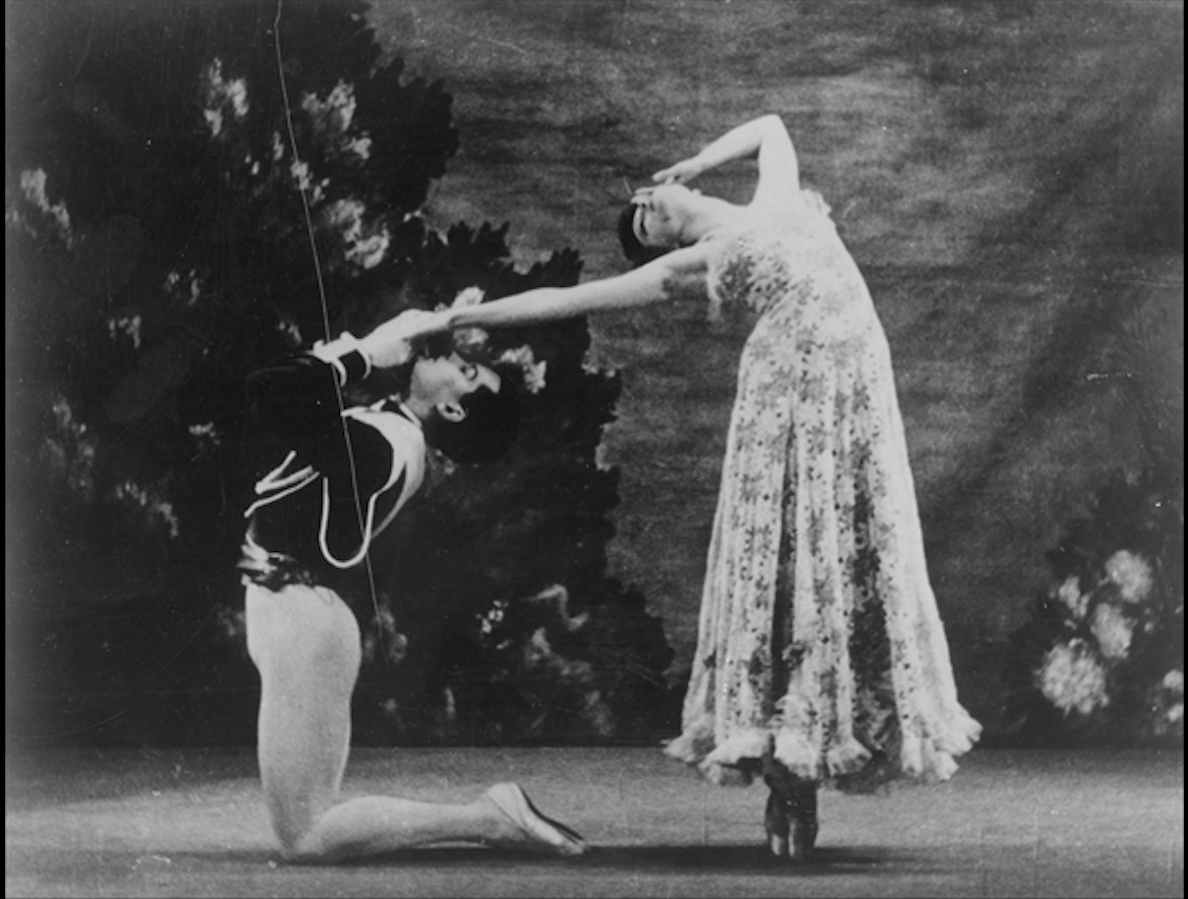
Maude Lloyd and Hugh Laing as Caroline and Her Lover in Anthony Tudor’s Jardin aux Lilas, Mercury Theater, 1936. The “Zen of unspoken heartbreak.” British photographer unknown. From Core of Culture
“Neither of these are Caroline’s reality. It was about the moment itself. The mental and body actions of everyone correlate in Caroline. It was stripped of balletic expectation. The small details of the ballet compel the narrative. Especially when the entire cast remains frozen, save for one of the four main characters dancing their story . . . but it wasn’t their story. It belonged to no one; it affected everyone. It was Caroline’s perception, her insight, as tragic as it is, but it is not Caroline’s nor any character’s story. The story is ‘just this.’ Everyone is in it, caught. This was a ballet about perceptive insight, dispersing habitual behavior in expression, the naked reality of being.”
“Can you move this coffee table for me?” she asked during our interview. So I pushed it a couple meters from the sofa where we were sitting. Nearly blind, the famous dancer, stood up, “It was a Zen ballet, he told us.” She raised her arms above her head and started walking on her raised feet. “I’d never heard of Zen, and didn’t know what he was going on about. Back then we were all poor, just barely forming a company. No one was paid for rehearsals. But that was alright. It meant we could rehearse as much as we wanted. And we did.”
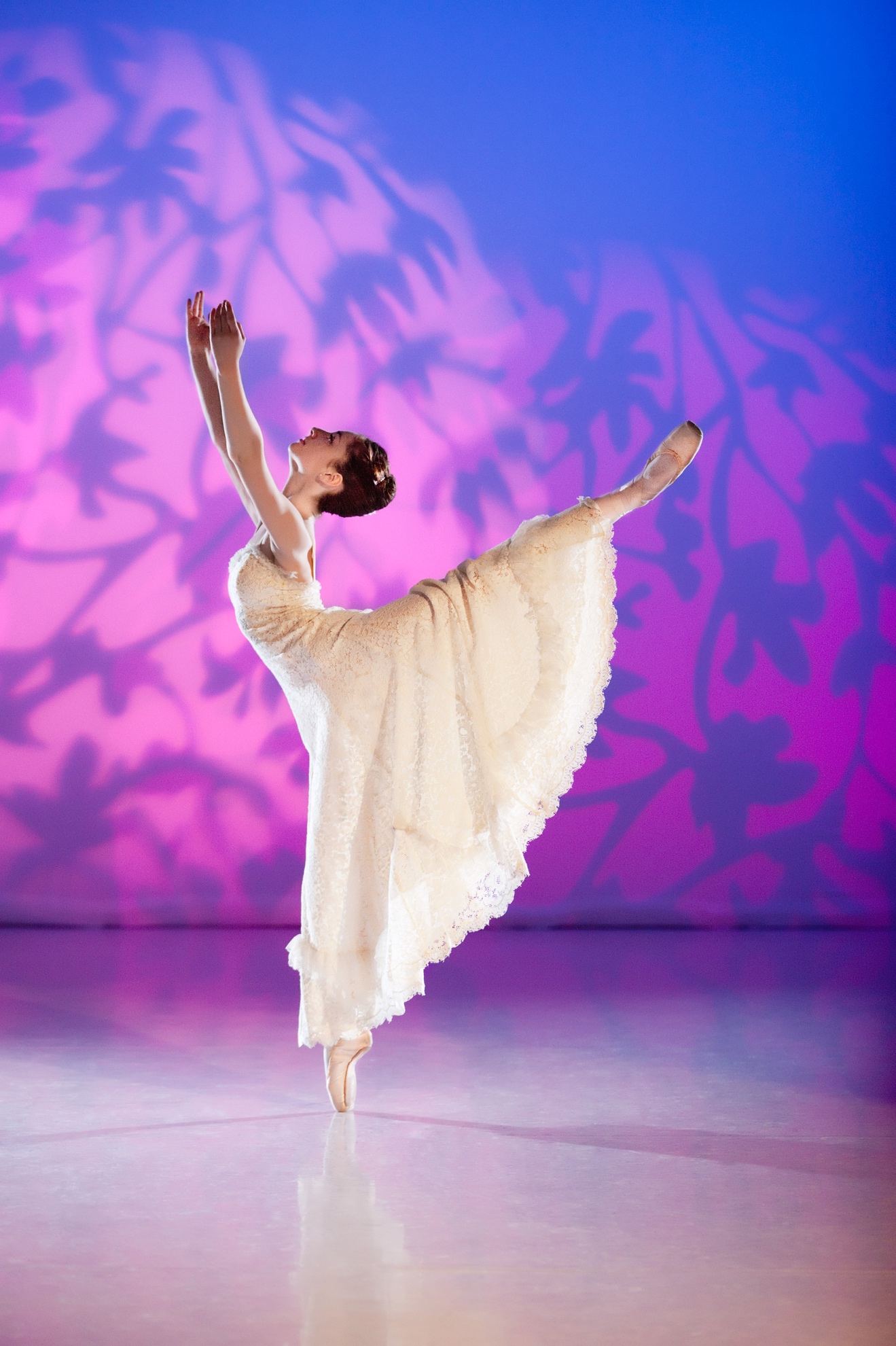
Making the moment matter; “just dance.” Royal Ballet School student, end of
year performance, Caroline in Jardin aux Lilas, 2010. Photo by Johann Persson
“We were in the kitchen of his small garden apartment, rehearsing, the four of us: Tony, me, Hugh [Laing], and Peggy [Von Praagh]. ‘Zen pierces through,’” Maude recalled to herself aloud. She turned and threw her arm over her head in abandon. It was startling. “That is when I began to be attuned to what he was trying to tell us. There were so many social conventions afflicting Caroline, and just as many personal emotions. ‘Pierce through!’ he would order—he wasn’t always nice. But it was then that I realized the moment itself, free of all characteristics, was ripe with power and truth, more than lilacs in bloom, more than an oppressive society . . . more than ballet technique.”
She executed a small lunge, raising a hand to her forehead. I jumped up to catch her, but she was fine. “I remember the whole thing. If ‘the moment’ wasn’t there, nothing else mattered. Tony did not care about representation, but reality. He was a practicing Zen Buddhist and knew that it applied to everything, ballet included. We didn’t understand it really, but it was all in the choreography. It is still there, you know. Jardin has become an enduring masterpiece, one of the greatest ballets of the 20th century.”
Full Ballet, Jardin Aux Lilas. Ballet Company and date unknown. From Youtube.com
I mentioned that there was some concordance with a ballet about repressed emotions coming naturally from British culture. She responded to that: “It is not about repression, nor any other psychological state. It is about the Zen moment. Perhaps the British are inclined to that? I don’t understand it all—he was a genius in his way, but I’ve had some years to think about it. So is the question that contemporary dancers should communicate the austerity and economy of the movement, or that they should grasp the Zen moment? Ha! By not grasping!” She laughed. “He was right when he said many more people got Zen wrong than right. He also said that Zen was best expressed without words. Perhaps today’s dancers must find ways to absorb that?” Maude Lloyd Gosling spoke like a sage, and like a dancer. She was kind and gracious, and for all her years, moved like sylph.
While it is easy to understand explorers who traveled to encounter Buddhism, and artists who imitated Asia, it is quite something to recognize an artist in London in the 1930s who rid himself of his personal belongings, practiced Zen Buddhism and Hatha yoga, and sought to make a Zen ballet. It was unlike anything dance-goers had seen. In the process Tudor revolutionized what ballet could be, and created works of enduring beauty. This modernist masterpiece, Jardin aux Lilas, will be performed in March 2020 at the Auditorium Theater in Chicago by the American Ballet Theater of New York, a company with which Tudor has a long association and which keeps his works alive. We shall see how todays dancers communicate the Zen of unspoken heartbreak; see whether they “pierce through.”
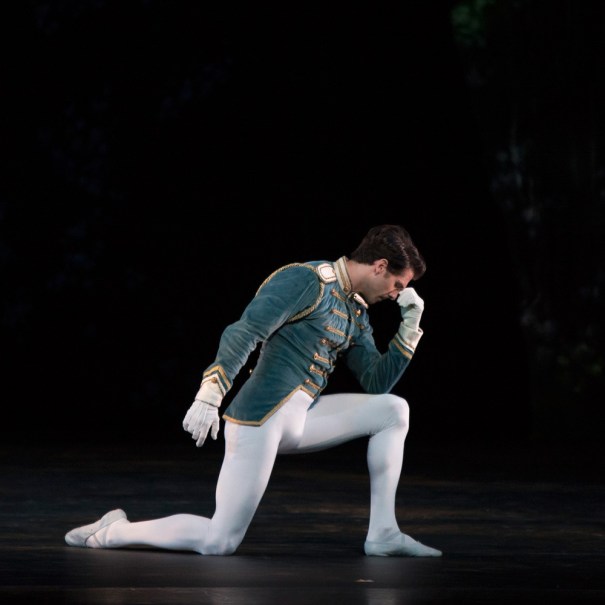
Corey Landolt as Her Lover in Jardin Aux Lilas, 2017.
Image courtesy of the Washington Ballet
See more
Related features from Buddhistdoor Global
Dance in the Reality You Have
An Eye, a Lens, a Dance
When Dance Transforms
Zen Master Merce














